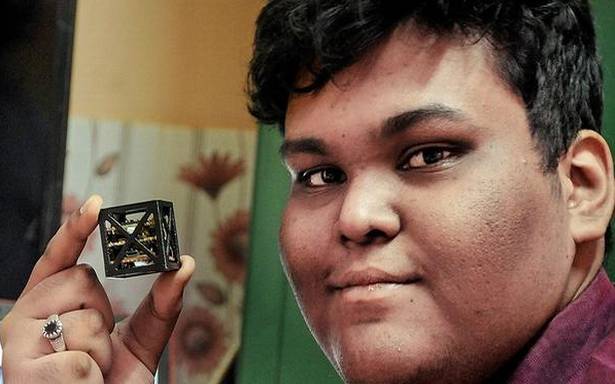
Rifath Shaarook, an Indian teen from Chennai, just won a NASA-sponsored contest for building the lightest satellite in the world. His contraption is made from 3-D printed carbon and only weighs 64 grams (0.14 lbs) — that’s about as light as a tennis ball.
The tiny satellite is called KalamSat, after Indian nuclear scientist and former president, A.P.J. Abdul Kalam. It was selected from 86,000 submissions from 57 countries for the “Cubes in Space” contest, a student competition organized by education company I Doodle Learning and sponsored by NASA.
“We designed it completely from scratch,” Shaarook said, “It will have a new kind of on-board computer and eight indigenous built-in sensors to measure acceleration, rotation, and the magnetosphere of Earth.”
The device will be mainly 3-D printed from carbon. In fact, that’s what weighed the most when the jury selected it as the winning entry — because of the practical value to science. On June 21, the satellite will piggyback on a 4-hour-long sub-orbital mission launched from NASA’s Wallops Flight Facility in Virginia. Once in orbit, NASA is interested in learning how the casing made from carbon fiber polymer withstands microgravity and radiation.
If the satellite’s design is proven resilient, it’s likely NASA will invest more in similar manufacturing for lightweight payloads. Although SpaceX has reusable rockets, it still costs at least $27,000 per pound to launch stuff in Earth’s low orbit. As SpaceNews reports, in February NASA made a call for innovative payload designs that could fly on a mysterious satellite. So, there’s a great deal of interest and resources at stake.
Nevertheless, this whole story is about Shaarook, an inspiring teen who shows that you can even shoot for the stars with enough hard work and a bit of talent. Previously, Shaarook, who is also the lead scientist at Space Kids India — an organization that promotes science education for Indian children and teens — invented a helium weather balloon at age 15.


